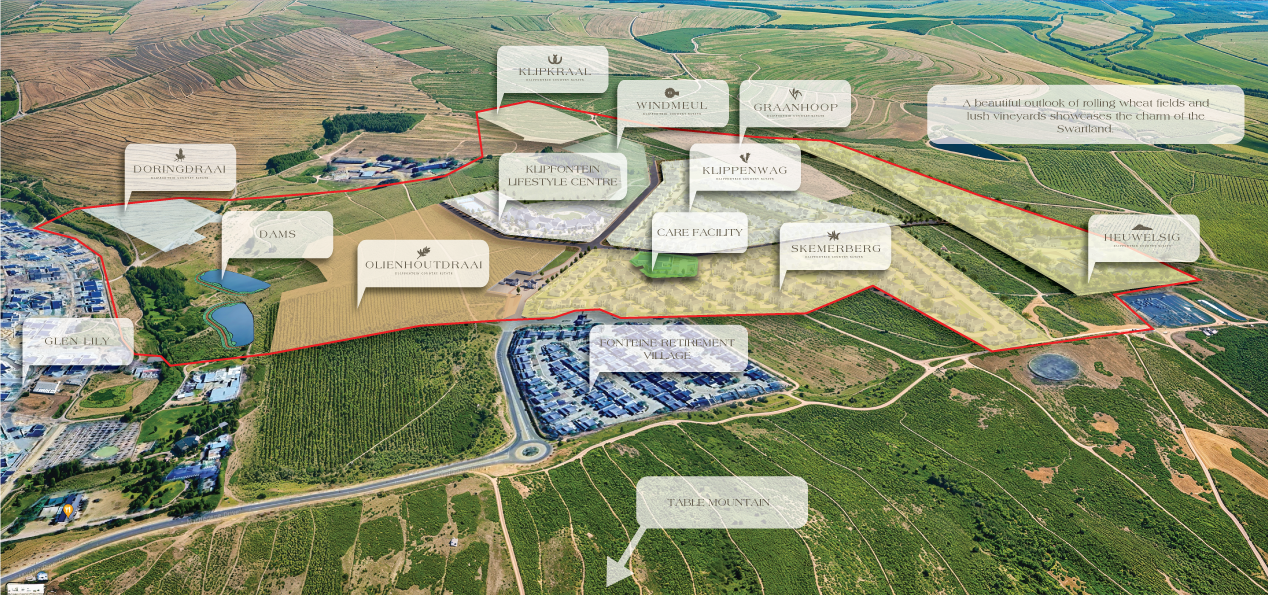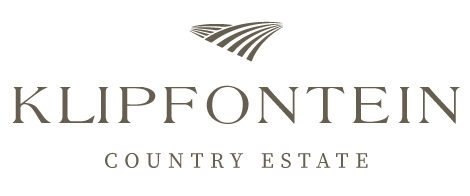
YOUR
WELL-BEING
COMES FIRST
Every aspect of Klipfontein Country Estate's design and construction intentionally caters to resident well-being. This is an integral part of our purpose - to provide residents with a secure and harmonious intergenerational community environment where they can thrive.


YOUR
WELL-BEING
COMES FIRST
Every aspect of Klipfontein Country Estate's design and construction intentionally caters to resident well-being. This is an integral part of our purpose - to provide residents with a secure and harmonious intergenerational community environment where they can thrive.
KLIPFONTEIN COUNTRY ESTATE IS PURSUING THE INTERNATIONAL WELL BUILDING AND COMMUNITY STANDARD.

The WELL Community Standard aims to impact individuals not just within the walls of their homes or workplace, but throughout the public spaces where they spend their days. A WELL community is designed to support health and well-being across all aspects and areas of community life.
Resources in a WELL community, being natural, human and technological, are used effectively, equally and responsibly to meet Klipfontein Country Estates current and future needs and priorities.
The WELL standard is broken up between the following concepts:
Air, Water, Nourishment, Light, Movement, Thermal Comfort, Sound, Material, Mind and Community.
WHAT IS WELL ABOUT?
AIR
The WELL Air concept aims to achieve high levels of indoor air quality across a building’s lifetime through diverse strategies that include source elimination or reduction, active and passive building design and operation strategies and human behavior interventions.
WATER
Drinking water quality; public water sanitation; facilities provisions; strategies for managing contaminated water on a systems scale; strategies to promote drinking water access.
NOURISHMENT
Fruit and vegetable access, availability and affordability; policies to reduce the availability of processed foods; nutritional information and nutrition education; food advertising and promotion; food security; food safety; strategies to support breastfeeding.
LIGHT
Maintained illuminance levels for roads and walkways; strategies for limiting light pollution and light trespass; glare and discomfort avoidance.
MOVEMENT
Environmental design and operational strategies to reduce the risk of transportation-related injuries; mixed land use and connectivity; walkability; cyclist infrastructure; infrastructure to encourage active transportation; strategies to promote daily physical activity and exercise.
THERMAL COMFORT
Strategies to reduce the heat island effect; policies to deal with extreme temperatures; policies to manage sun exposure and ultraviolet risk.
SOUND
Noise exposure assessment; planning for acoustics; techniques to reduce sound propagation; hearing health education.
MATERIALS
Strategies to reduce exposure to hazardous chemical substances in cases of uncontrolled / accidental release and contaminated sites; strategies to limit use of hazardous chemicals in landscaping and outdoor structures.
MIND
Access to mental health care, substance abuse and addiction services; access to green spaces.
COMMUNITY
Health impact assessments; policies that address the social determinants of health; health promotion programming; policies that foster social cohesion, community identity and empowerment; crime prevention through environmental design; policies and planning for community disaster and emergency preparedness.
WHAT IS WELL ABOUT?
AIR
The WELL Air concept aims to achieve high levels of indoor air quality across a building’s lifetime through diverse strategies that include source elimination or reduction, active and passive building design and operation strategies and human behavior interventions.
WATER
Drinking water quality; public water sanitation; facilities provisions; strategies for managing contaminated water on a systems scale; strategies to promote drinking water access.
NOURISHMENT
Fruit and vegetable access, availability and affordability; policies to reduce the availability of processed foods; nutritional information and nutrition education; food advertising and promotion; food security; food safety; strategies to support breastfeeding.
LIGHT
Maintained illuminance levels for roads and walkways; strategies for limiting light pollution and light trespass; glare and discomfort avoidance.
MOVEMENT
Environmental design and operational strategies to reduce the risk of transportation-related injuries; mixed land use and connectivity; walkability; cyclist infrastructure; infrastructure to encourage active transportation; strategies to promote daily physical activity and exercise.
THERMAL COMFORT
Strategies to reduce the heat island effect; policies to deal with extreme temperatures; policies to manage sun exposure and ultraviolet risk.
SOUND
Noise exposure assessment; planning for acoustics; techniques to reduce sound propagation; hearing health education.
MATERIALS
Strategies to reduce exposure to hazardous chemical substances in cases of uncontrolled / accidental release and contaminated sites; strategies to limit use of hazardous chemicals in landscaping and outdoor structures.
MIND
Access to mental health care, substance abuse and addiction services; access to green spaces.
COMMUNITY
Health impact assessments; policies that address the social determinants of health; health promotion programming; policies that foster social cohesion, community identity and empowerment; crime prevention through environmental design; policies and planning for community disaster and emergency preparedness.

Our Upcoming Phases
GET TO THE FRONT OF THE QUEUE TODAY
GET PRE-APPROVED FOR A HOME LOAN

Klipfontein Country Estate is proudly associated with IMortgage, an experienced and professional bond originator with a proven track record of providing new home buyers with the best interest rates on their home loans.
Hit the button below to find out what you can afford and get pre-approved for a home loan at the best possible rate!














